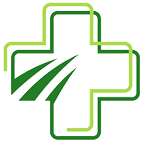Millions of people worldwide suffer from vascular ailments, known as varicose veins including Upper East Side. Understanding the anatomy of varicose veins is crucial for understanding their treatment. In this article, we discuss the anatomy of varicose veins Upper East Side and explain what they are, how they develop, and why they could be uncomfortable.
The Basics of Veins
Let us quickly review the fundamental structure of veins before discussing varicose veins:
Blood arteries, called veins, are responsible for transporting oxygen-depleted blood back to the heart. Veins have thinner walls than arteries, which have thicker walls to sustain high-pressure blood flow from the heart. Backward blood flow is prevented by the valves and muscle contractions in these organs.
What is Varicose Veins?
Varicose veins are essentially veins that have lost their ability to function properly. The primary factors contributing to varicose veins were as follows.
- Valve dysfunction: In veins, tiny one-way valves keep blood flowing in one direction toward the heart and prevent it from pooling. When these valves deteriorate or break, blood can flow backward and pool in the vein, leading to varicose veins.
- Increased Pressure: As a result of blood pooling, the vein pressure rises over time, causing it to enlarge, twist, or swell. This is why varicose veins frequently manifest on the skin surface as elevated, rope-like formations.
- Stagnant Blood: Blood that remains stagnant in the veins might result in further issues, such as inflammation and blood clot formation.
Anatomy of a Varicose Vein
A varicose vein typically comprises several key components.
- Vein Wall: As a result of the increased pressure brought on by a dysfunctional valve, the vein wall thickens and stretches.
- Valve Damage: The one-way valves of the vein could be harmed or rendered ineffective, allowing blood to flow backward.
- Blood Pooling: As blood builds up in the vein, it swells and morphs visibly.
- Inflammation: Blood that pools for an extended period of time may cause inflammation in nearby tissues.
Understanding the anatomy of varicose veins is essential to understanding how they affect the body and why they develop. Despite the fact that varicose veins can be uncomfortable and a cosmetic problem, modern medical procedures and lifestyle changes now provide efficient techniques to control and relieve these symptoms, eventually enhancing quality of life. If you believe you may


